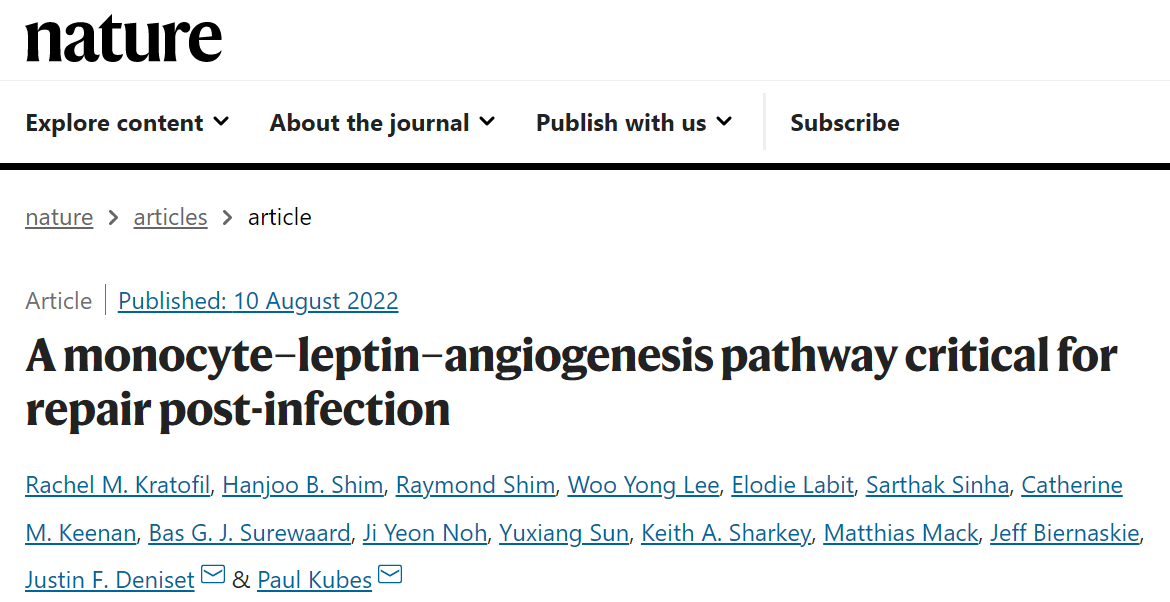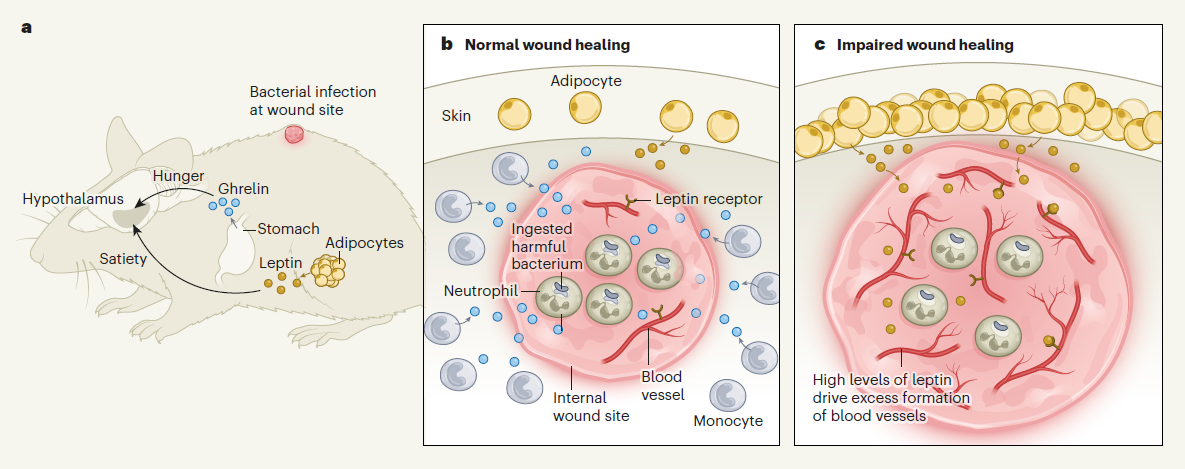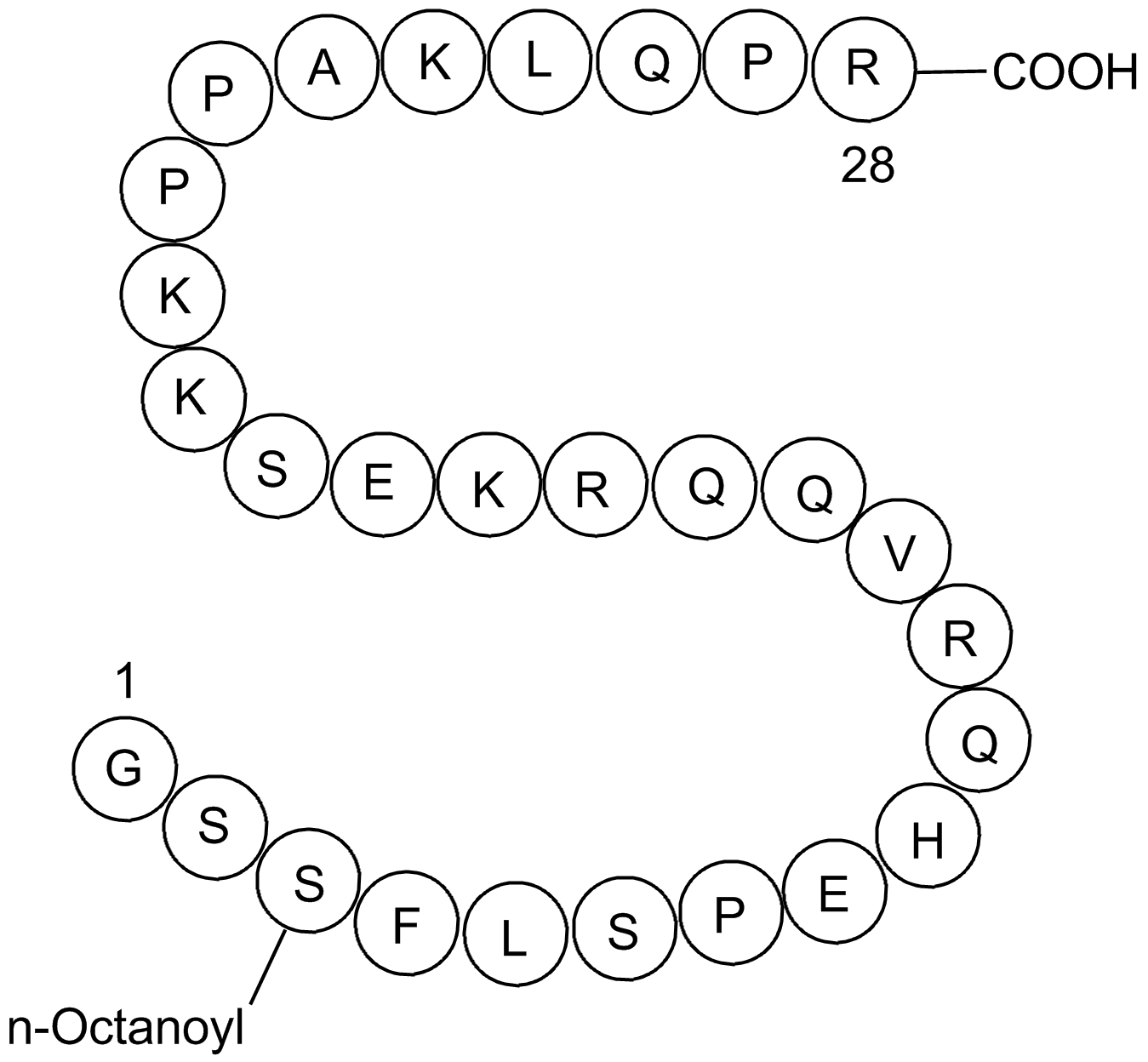Immune Cells Use Ghrelin to Promote Wound Healing
When people are hungry, the stomach produces Ghrelin, which makes people feel hungry and promotes appetite, and after eating, fat cells produce Leptin, which makes people feel full and suppresses appetite. This homeostasis between ghrelin and leptin has long been thought to be critical for metabolism and diet.
Loss of appetite is the most common symptom associated with fever and inflammation caused by infection, and the body's immune, metabolic, and nervous systems communicate with each other and coordinate responses to infection to restore normal function. But until now, the link between these ghrelin hormones and the immune system and tissue repair was unknown.
On August 10, 2022, researchers from the University of Calgary in Canada published a research paper entitled: A monocyte–leptin–angiogenesis pathway critical for repair post-infection in the top international academic journal Nature.
This study found that monocytes do not contribute to bacterial clearance after infection, but instead promote wound healing by regulating leptin levels and blood vessel growth. Specifically, monocytes produce ghrelin during infection, which inhibits leptin levels and blood vessel growth and improves wound healing after infection.
This study is the first to reveal the important role of the monocyte-leptin-angiogenesis pathway in the process of infection repair, suggesting a promising new approach for treating skin infections and promoting wound healing.

Rachel Kratofil, lead author of the paper, said the study is exciting and provides fundamental findings that could improve infection and tissue repair in humans, especially in difficult-to-treat cases.
Traditionally, researchers thought that both neutrophils and monocytes (both white blood cells) were recruited to clear bacteria from the site of infection on the skin. When these cells work together, they form the first line of defense of our body's immune system.
The latest study shows that monocytes do not contribute to bacterial clearance after infection, but instead play a role in promoting faster wound healing. Monocytes aid the healing process by regulating leptin levels and blood vessel growth during wound repair, and they also produce ghrelin to help wounds heal more efficiently.
The Surprising Link between Metabolic Hormones and Tissue Repair
In this latest study, the research team used intravital imaging microscopy to observe the immune response to S. aureus infection in a live animal model. Staphylococcus aureus, a bacterium commonly found in the skin, nose, and stomach in healthy people, can be a catalyst for a variety of skin and tissue infections-related diseases, such as abscesses or boils. In some cases, S. aureus can also cause serious infections, such as pneumonia or life-threatening endocarditis.
The research team found that after S. aureus infection, the body recruits immune cells called neutrophils and monocytes. Neutrophils are responsible for clearing bacteria, while monocytes aid in wound healing and repair.
In the absence of monocytes, increased production of leptin leads to the growth of blood vessels during infection, which can result in delayed wound healing and scarring. In contrast, monocytes produce ghrelin at the site of infection, which prevents excessive blood vessel growth driven by leptin, thereby promoting tissue repair and wound healing.

Significance of This Research
Rachel Kratofil, the first author of the paper, said the study has important implications, challenging the current view that neutrophils and monocytes are responsible for clearing infectious bacteria and elevating the role of monocytes in wound repair after infection.
Corresponding author Professor Paul Kubes said the study opens the door to the introduction of metabolic hormones (ghrelin and leptin) in the fields of immunology and microbiology. He also said that further exploration of the response of these two metabolic hormones in other diseases (such as sterile injury and cancer) and understanding their response in complex diseases (such as obesity, diabetes) is very attractive.
Ultimately, the team says that next steps will be to better understand the function of immune cells, such as neutrophils, during infection. Specifically, they will explore how neutrophils clear bacteria from infection, and how Whether gonocytes have other functions besides clearing bacteria.
Paper link:
https://www.nature.com/articles/s41586-022-05044-x















Comments